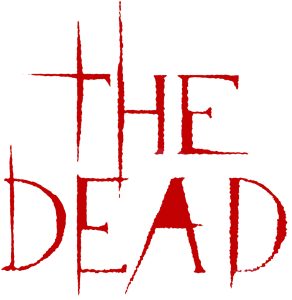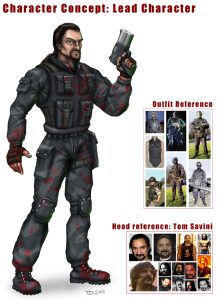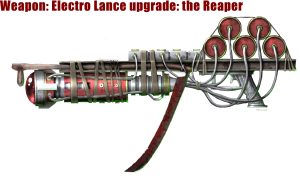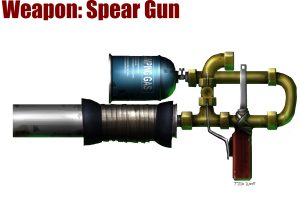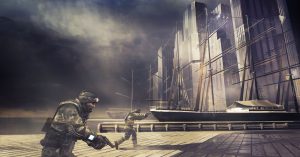Outcast 2: The Lost Paradise is a canceled action-adventure game that was developed from 1999 to 2001 by Appeal Studios and published by Infogrames for the PC and the Playstation 2. It was the sequel to the game Outcast, released in 1999 exclusively on PC and also developed by Appeal.
Franck Sauer, co-founder of Appeal, shared the full experience of the development of Outcast 2 on his personal website:
HOW IT ALL STARTED
PRE-PRODUCTION
In mid-1999, right after the release of Outcast, we started pitching new ideas about a sequel and tried to convince Infogrames (our publisher) to fund a pre-production, quickly.
Infogrames had stock in our studio Appeal, and as partners they were more inclined to help us proceed with the sequel. They were cautious though. The sales reports from Outcast were underwhelming, way below their one million initial target (we ended up selling slightly over 400k boxed units).
At first we managed to sign a pre-production deal and we proceed with R&D and graphics design. As sales were disapointing on the PC, Infogrames insisted that we should make the game for consoles first. They also insisted to have more action and less adventure, because that’s what console gamers want they said, something Yves Grolet in particular was not very happy with.
FROM PC TO PLAYSTATION 2
Another difficulty started when it became evident the Playstation 2 would be the best selling console of the generation. Yves wanted to work on the Xbox, which was the superior console in term of rendering capabilities, and easier to work with, but from the publisher’s point of view it made no sense to work for the smaller installed base. We all liked the idea of working on consoles in general, as close systems have their sets of challenges but are very interesting to work on, and we had this arcade background that made us probably overconfident, especially considering the Playstation 2.
The Playstation 2 was a very difficult console to work with, especially for a studio with most of its engineers only experienced on PC, and it took some times to get the dev kits and actually realise what a PS2 was (there was a lot of speculation at the time). With the dev kits finally available, we were progressing slowly and initially had a lot of performances and stability issues. At some point, Yves would decide to quit and start his own company (elseWhere Entertainment) to work on the Xbox.
We finally signed a production agreement. At first it was a 7 million contract, but got reduced to 5 million as Infogrames was starting to feel pressure from the market. We managed to develop a working demo with a lot more work also done behind the scene on the game’s universe and environments, but we were far from being ready to ship an actual product. Internal difficulties also raised when we hired a designer to replace Yves, only to find out a bit late that the guy was heading the design in the wrong direction. That didn’t help either as we had to rethink the whole design again in the middle of the production.
The project was killed after spending about 3 millions as Infogrames stocks were hitting a new low in 2001 after the internet bubble (and all IT companies as a side effects) exploded. They pretty much killed all their 3rd party projects, focussing all remaining funds to their internal studio, Eden Games.
THE START OF THE END
However, as Infogrames were shareholders in our company, they couldn’t kill us so easily (they would have to clear-up the debts). Instead they sold us back their stocks in exchange of a new pre-production contract around a Tintin game. We didn’t have much choice if we wanted to keep the studio alive, but for them it was a win-win situation, they were set free from their shareholder duties and had a working prototype they could show to Moulinsart (the company that holds the rights to Tintin).
When the Tintin prototype was completed, they did not sign the Tintin game (purposely or not we have no idea) and we went bankrupt in 2002. Yann Robert and I purchased back most of the assets belonging to Appeal the Curator could not sell, including the unfinished technology that would help us later to develop and (finally) ship Playstation 2 games Wild Water Adrenaline and Mountain Bike Adrenaline.
Some additional details were shared in February 2015 by Gamestar during an interview with Frank Sauer. We learned in particular that the game was running on a brand new engine called Himalaya, replacing the voxel technology, used on the first title, in favor of one working with polygons. For instance, it allowed to display swirling dust particles in some levels.
Still according to Franck Sauer, the story took place just after the events of the first Outcast, where the main character, Cutter Slade, now living alone in a hut in the mountains, receives a distress call from a Talan, the natives from the planet Adelpha, about an invasion of humans, called New World Army and helped by soldier bots, coming to colonize the planet. A parallel with the film Avatar was notably drawn. Other novelties planned in the sequel were the addition of an all-terrain vehicle for travelling in the open world as well as new levels and territories, such as, for example, a spaceship that Cutter had to hijack in order to be able to move from one area to another.
After more than a decade without the license being mentioned, Appeal, under the name DAOKA Studio at the time, attempted a first comeback for a reboot of the first game in high definition called Outcast Reboot HD in 2014 on Kickstarter, unfortunately without success. Later that same year, the developers, under the Fresh3D’s name, ported the original game to Steam as Outcast 1.1, before managing to release their HD remake in 2017 under the name Outcast: Second Contact on PC, Xbox One and Playstation 4 thanks to BigBen Interactive as publisher. At the beginning of 2019, the publisher THQ Nordic bought the license before officially announcing a sequel on September 17 2021, still developed by the original team, renamed once again Appeal Studios, and called Outcast 2: A New Beginning, almost 20 years after the cancellation of the original planned sequel.
Article updated by Daniel Nicaise
Thanks to Marcel Lutrix for the contribution!
Images:
Videos:

